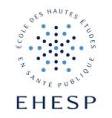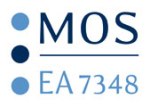Expected contributions should be from a broad and interdisciplinary perspective: marketing, communication, management, information science, psychology, sociology, economy, public health, etc. Expected papers should be related to one or more of the following thematic axis (the various thematic discussed herewith are indicative and non-exhaustive):
Axis 1: Digitalization of the health sector: Interdisciplinary topic by essence, digitalization in the heath sectors is a fast growing trend that occurs however in disparate ways. Regarding this particular topic, the pharmaceutical industry may be ahead of the game: to manage relationship with the doctor (e-detailing), health equipment industries such as General Electric have connected their 500.000 scanners and MRIs to a “HealthCloud”; Surgeons perform surgery at a distance; hospitals are now using social media with 94% of them in 2014 being active on Facebook… in the USA(Griffis et al. 2014); Patients consult the Hospitalidee webpage to collect information posted by other patients on the health structures or they exchange and share opinions on Patientsworld; mobile applications enables to improve and reinforce therapeutic education; social marketing run big data analysis to help organize and implement programs, it also enables the creation of relevant applications dedicated to cessation support (e.g., the app “Tabac-Info-Service” provides assistance to quit smoking); connected bracelets help detect depressive episodes. Although scattered, mobile applications are in fact flourishing in the healthcare sector. Thus it is legitimate to wonder about the stakes specific to their development within this sector?
- Griffis HM1, Kilaru AS, Werner RM, Asch DA, Hershey JC, Hill S, Ha YP, Sellers A, Mahoney K, Merchant RM., (2014), Use of social media across US hospitals: descriptive analysis of adoption and utilization, Journal of Medical Internet Research, 16(11), e264. http://doi.org/10.2196/jmir.3758
Axis 2: Social Marketing is defined as « the application of commercial marketing concepts, knowledge and techniques to analyze, implement and assess programs which aim is to modify the behaviors of target populations, in order to improve their well-being and the society’s welfare ». Social marketing in the field of public health, prevention and fight against addictive and deviant behavior ( "santéisme"-“ Healthism”, noncompliance), innovative and strategic tools of the actors of social marketing (critical social marketing, advertising, lobbying , education, health promotion, public relations, community involvement, price and taxation policies, etc.). What are the parameters and specifics of social marketing? Is there a significant gap between what social marketing is in practice and what is could (or should) be? What are the challenges health actors have to face in order to properly master the social marketing approach with the objective of fostering innovation and improvement of prevention program effectiveness? How to improve the effectiveness of communication campaign using social marketing? What about the relation between ethics and social marketing? What is the link between health promotion and social marketing?...
Axis 3: the hospital sector is evolving quickly in regard to its traditional model. The increasing pressure from the market and countries makes the health system transition from a “fee for service” to a “fee for value” model (Schroeder et Frist, 2013), which obligates the health care industry to speed up its evolution towards a market-oriented state (Huang et al., 2014; Lonial et al., 2008; Wrenn et al., 2006) using marketing as a mean to survive in competitive environment in terms of offer, quality and service. Marketing competences and skills will constitute in the future one of the main levers of success in the health care industry notably in terms of the patient experience management. More recently, Anderson et al. (2017) underline the importance of more research on services and their conception but also the strategic aspects of marketing in the design of services portfolio.
Several domains are impacted by this change as public policies, brand image, new technologies of information and communication (social media platforms), services marketing, ethics, transformative service research, medical consumerism (Mold, 2017), new products/services development, service blueprint conception (omnichannel) and consumer behavior in that specific context.
The Internet, social media, smartphones foster the immediacy of information, which increases consumers’ level of expectations in terms of their willingness to be active health actors and requires new health care model (Osei-Frimpong 2017). That is because a “good conception” of health care services is essential to increase the patient experience (Kim et al., 2017). When patients are more involved in their process of health care, they require higher standards (Sweeney et al., 2015). Nevertheless the participation of consumers remains essential to obtain better results in terms of services and more simplified and accessible health care processes.
Finally big data and data collecting devices (wearables) are about to revolutionize the whole set of health care services…
- Huang, J., Lai, C., Hu, J., and Weng, R. (2014), “The impact of market orientation on patient loyalty: The mediation of relationship quality”, Service Business, Vol. 8 No. 4, pp. 499-515
-
Lonial, S.C., Tarim, M., Zaim, H., Zaim, S., and Tatoglu, E. (2008), “The impact of market orientation on NSD and financial performance of hospital industry”, Industrial Management & Data Systems, Vol. 108 No. 6, pp. 794-811
-
Wrenn, B., Latour, S.A., and Calder, B.J. (1994), “Differences in perceptions of hospital marketing orientation between administrators and marketing officers”, Journal of Healthcare Management, Vol. 39 No. 2, p. 341
-
Mold, A. (2017), “Nancy Tomes, Remaking the Modern Patient: How Madison Avenue and Modern Medicine Turned Patients into Consumers”, Social History of Medicine, Vol. 30 No.3, pp. 473-474
-
Osei-Frimpong, K. (2017), “Patient participatory behaviours in healthcare service delivery”, Journal of Service Theory and Practice, Vol. 27 No. 2, pp. 453-474
-
Sweeney, Jillian C., Danaher, Tracey S., and McColl-Kennedy, Janet R. (2015) “Customer Effort in Value Cocreation Activities: Improving Quality of Life and Behavioral Intensions of Health Care Customers”, Journal of Service Research, Vol. 18 No. 3, pp. 318-335
-
Kim, S.H., Myers, C.G., and Allen, L. (2017), “Health Care Providers Can Use Design Thinking to Improve Patient Experiences”, Harvard Business Review, pp. 2-5
Axis 4: The revolution of connected health and health 2.0, the revolution of the pharmaceutical industry digitalization, of the health products and biomedical materials, of industry equipment, of service businesses, of the health-nutrition-beauty sector, etc: what strategies to adopt in a highly disruptive environment? What impact on the organization, the competition and the salesforces? What new forms of relation to the professionals, to the newly empowered and consumerist patients, to the institutions tackling the issues of control, payment, organization of the health care offer in regard to the management of costs per pathology and treatment orientation? How are the new players (GAFAM, Mutelles, etc.) and what the substitute products to the current therapeutic solutions? The decompartmentalisation of the pharmaceutical laboratories’ actions in the service business (connected objects, IoT), health care networks, therapeutic education, health promotion, individualized medicine, health path…
Evolutions, revolution and prospects (eg from inactive patient towards prescriber patient, drug parallel markets, pharmaceutical industry in healthcare system, major transitions underway; from chemical to genetics treatment, mass treatment to individualized treatment, chronic versus acute, curative versus preventive, 4P's medicine, from sick care (treatment of diseases) to health care (treatment of health ), from push to pull, from the originator to the generic, rep's visit to e-detailing, from prescription to self-medication, from local to global, B to B to D to C communication , new stakeholders and new actors, etc.).
Axis 5: Other cross-sectional issues in the health sector (eg health variable price, databases and health sector, big data, opendata, crowd sourcing, quantified self, e-health, mobile health, "disease management" and therapeutic education, redraw the links between the different actors of the sector health, mutual insurance platforms as regulators, ... etc.).
|
|
 Aims of the 5th International Health Marketing Day
Aims of the 5th International Health Marketing Day Five thematic Axes
Five thematic Axes Two forms of communication are expected
Two forms of communication are expected Two presentation types
Two presentation types Publication for papers
Publication for papers






 Our partners
Our partners











